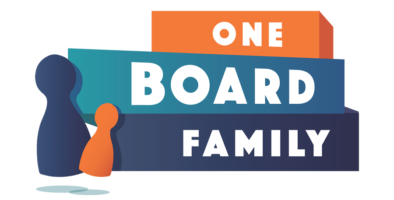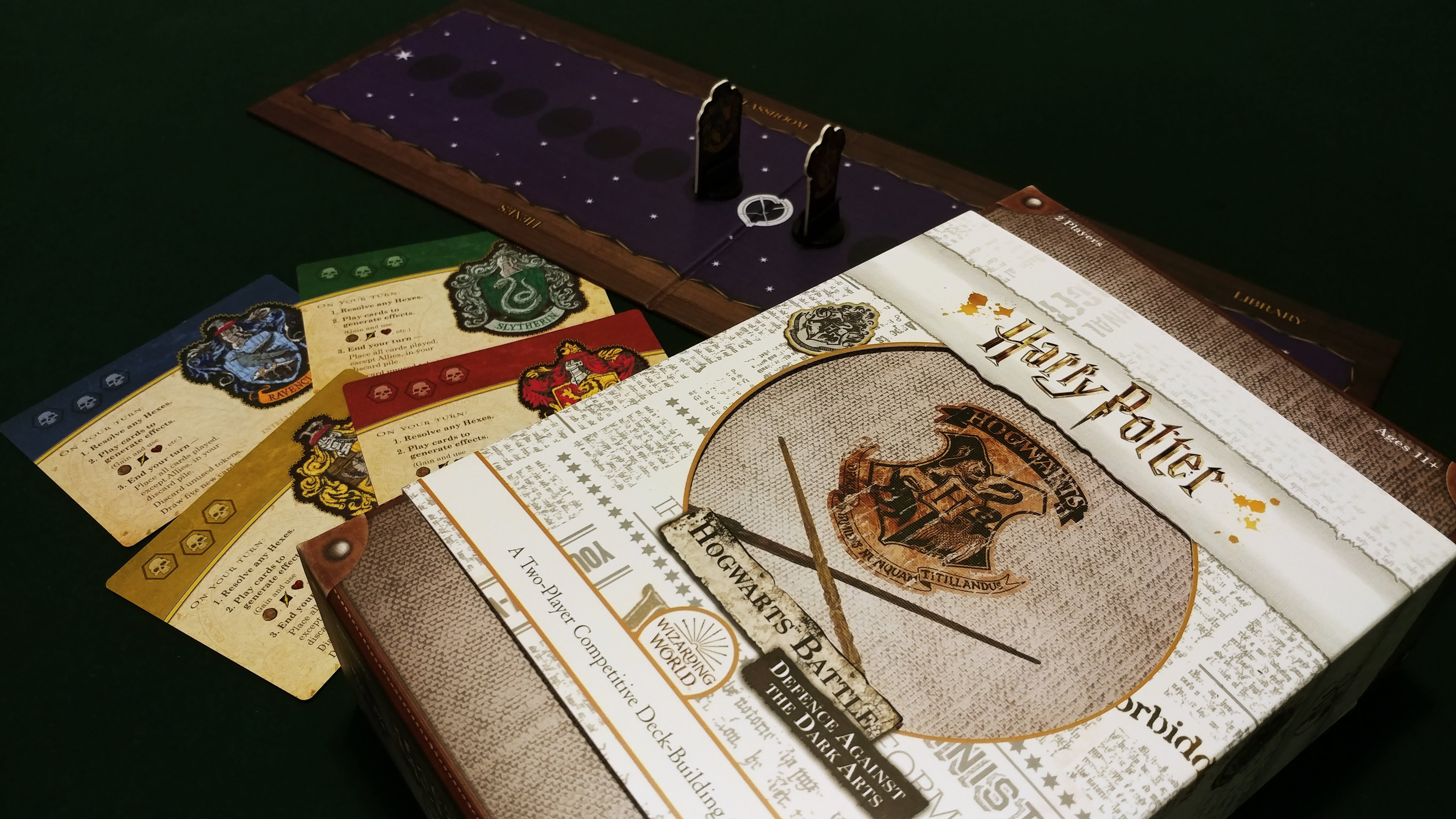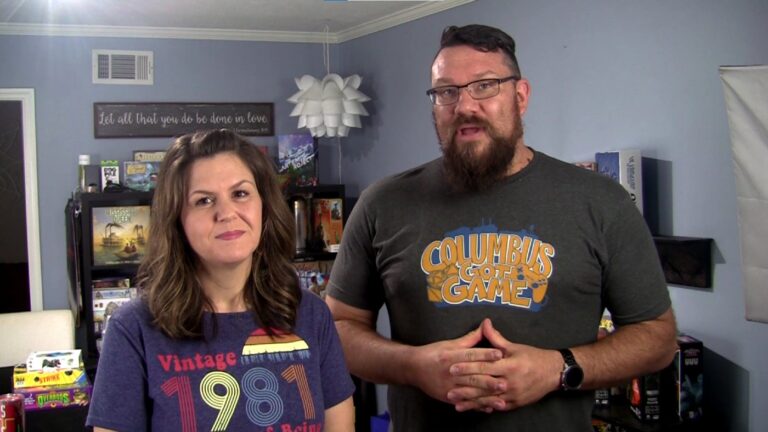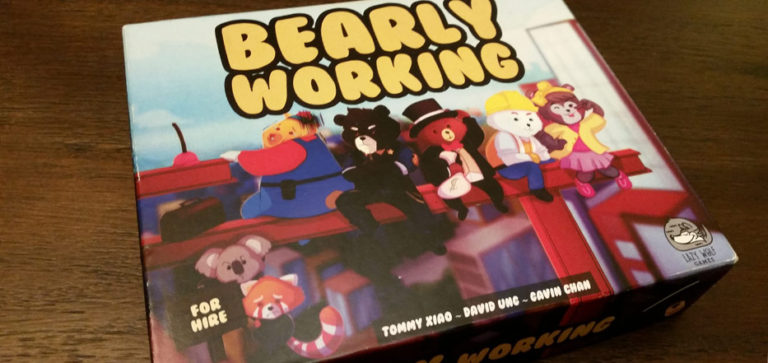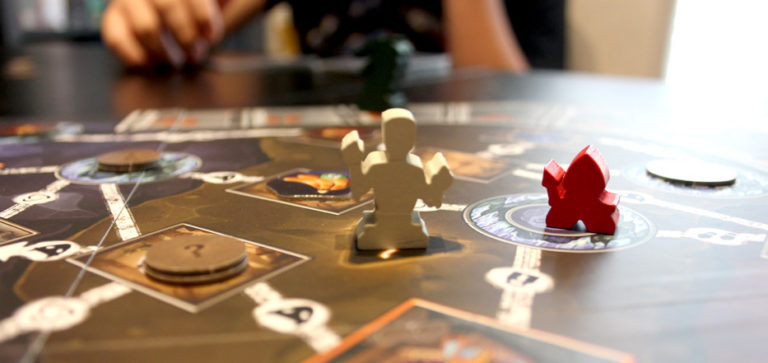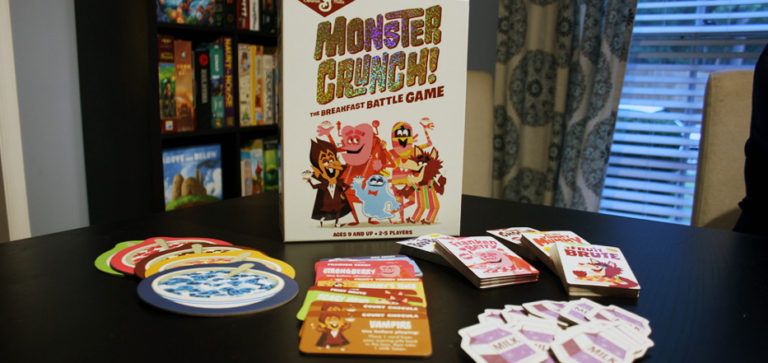When Harry Potter: Hogwarts Battle was first released in 2016, I was incredulous. Licensed games have always seemed to disappoint me, so I figured this would be a rip-off of some known property with a Harry Potter theme awkwardly pasted on top. However, the early reviews all suggested otherwise, and this fantastic deck builder has now become one of the favorites of our collection.
Yet despite HP:HB outperforming my expectations, I was once again doubtful when I heard about a two-player competitive version of the game being released by The OP in 2019. I just didn’t think that the game would play different enough to make it stand out from the solid entry that is the original. Now, after playing through the game a few times, I can say that Defence Against the Dark Arts has some differences from its predecessor, but it’s basically more of the same, for better or for worse.
I Solemnly Swear I’m Up to No Good
HP:HB-DAtDA (yeah, that’s one heck of an acronym) uses the same basic mechanics of the original game. Players start off with a small deck of cards. Throughout the game, they add more powerful cards to their hand while seeking to defeat the enemy. This time, though it’s not Voldemort – it’s the person sitting across the table from you.
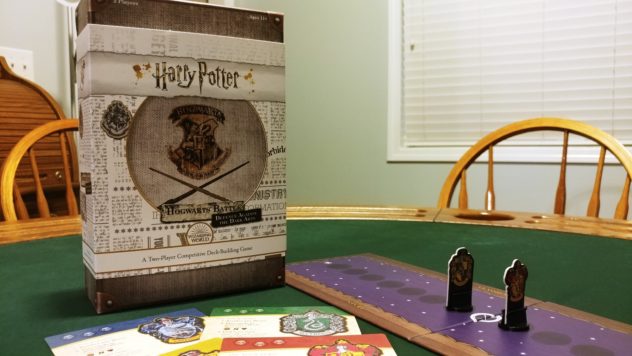
Also, instead of being one of the four major characters from the books, you’ll choose to side with one of the four houses of Hogwarts. And instead of fighting against bad guys who are trying to bully Harry Potter / take over Hogwarts / kill Harry Potter / take over the world, you’ll be training against one another as you utilize spells, items, and allies to become a better wizard. This spin on the game seems a little less exciting than the original (I mean, who doesn’t want to be Hermione?), but it is kinda cool that you get to be whichever house you like (long live Ravenclaw!)
In the original, each character had some unique cards within their deck, but that doesn’t really happen here. You’ll get the chance to pick which animal friend you’d like to start with as an ally – a cat, a toad, or an owl – but otherwise, both players have the same thing going on. It would be a nice touch if the different houses had starting cards that better reflected the particular traits associated with them, but what we’ve got here is serviceable.
I Put a Spell on You
Turns work similarly to the original Hogwarts Battle. You’ll draw five cards from your personal deck, and you’ll use them to buy new cards, increase your health, or attack your opponent. The new cards are purchased from a market, which features four cards (down from the original’s six). The item and spell cards are very similar to the original (with one exception we’ll discuss soon), though some of them are new. The ally cards, on the other hand, have undergone some significant changes – so much so that the cards are horizontal instead of vertical like all the others!

In the original, allies worked just like spells and items – you played them on a turn, they gave you some benefit, and then you discarded them with everything else. In Defence Against the Dark Arts, allies stay with you from turn to turn and provide you with lasting benefits. Hermione, for instance, allows you to draw an extra card if you play three spells on a turn. Malfoy, on the other hand, allows you to attack your opponent with one damage for each ally that they have in front of them.
Not only do allies provide you with powers, but they also help you to make the other cards in your deck more powerful. Some of the item and spell cards in the deck are associated with one of the four houses. If you or one of your allies belongs to that house, you’ll get an extra little bonus on top of what the card normally provides. So instead of just getting a heart and a coin, you might also attack your opponent for two damage, or maybe you’ll force your opponent to discard a card.
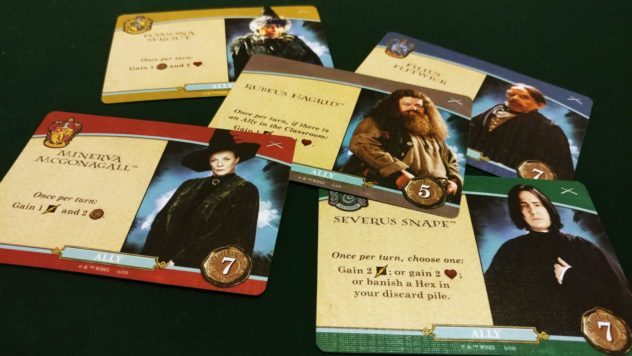
This mechanic of house associations is the biggest differentiator between this game and the original, and it adds almost an engine building feel to the game. Instead of just buying what seems like the most powerful card, you might instead buy something that fits with your or your allies’ houses so that each turn will be more and more effective.
What the Hex
Hex cards are another addition to the game. These cards are generally added to your deck after an opponent’s attack, and they have negative impacts on your turn. Most hex cards limit the impact of your turn, keeping you from attacking your opponent for more than one damage or preventing you from drawing extra cards. Others might have other consequences, like forcing you to add even more hex cards to your discard pile. These cards serve a similar purpose to the bad guys from the original, thwarting your plans and preventing you from doing exactly what you want from turn to turn.
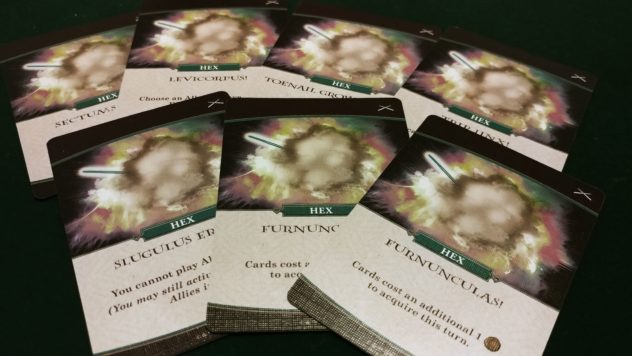
So as you fight back and forth with your opponent, you will move a marker on a small board that serves as a life tracker. If any player is moved so far back that they hit the ‘stun’ space, their opponent wins that round. At the end of the round, you’ll go back to your starting spaces, but you get to keep all the cards you’ve obtained over the course of the game. This means that by the time you hit your third or fourth round, both players have a powerful deck that enables them to pull off some impressive moves. The first player to win three rounds wins the game!
Not the Same Magic
So with the changes that I’ve mentioned, does this game stand out enough on its own? Well, not really. While the hex cards are a good idea, they just seem to be more annoying than the bad guys that you faced in the past. I guess thematically, the frustration they cause just doesn’t make as much sense. And while I love the way the game uses house alignment to power up cards, I don’t think that this mechanic really reaches its full potential. The incredibly large market deck (there are over 100 cards) means that it’s hard to get your hands on the right cards so that you can chain everything together.
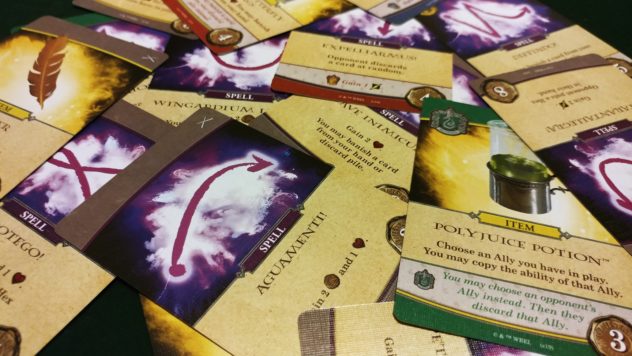
Once you do hit those rounds, the moves actually become a little bit too powerful. The track is about eight spaces long for each player. Once you hit the fourth round, it’s not out of the ordinary for someone to play a hand of cards that does five damage to their opponent. Unless the attacked player has just the right cards to heal themselves, this can lead to a round that’s over way too quickly.
After playing Defence Against the Dark Arts, I’m left wanting a second edition of the original game. One that includes the lingering allies and the house bonuses for items and spells. One that keeps the wonderful cooperative game, but also adds in a competitive mode that’s not just for two players, but for four. For now, this game will have to do for those deck building Harry Potter fans out there. And while it’s got some good ideas that will entertain you for a while, it’ll mostly leave you wanting more.
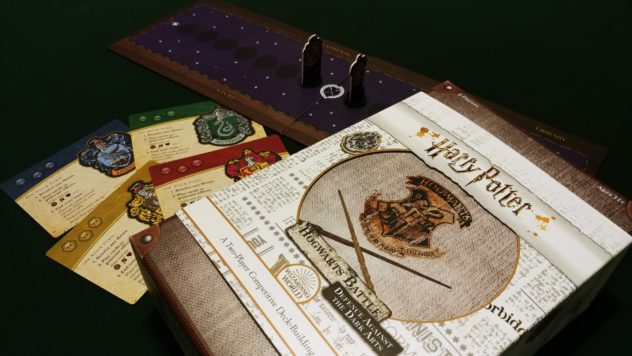
You can pick up a copy of this game at your local game store or on Amazon.
Highs
- The new house-specific powers allow for more strategy
- Many of the elements you love from the original are here
Lows
- It just doesn’t feel as smooth as the original
- The Hex and Book cards are kinda “meh”
